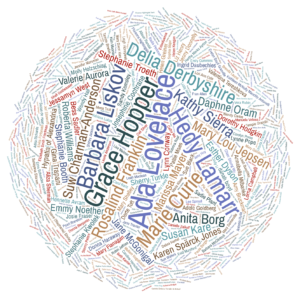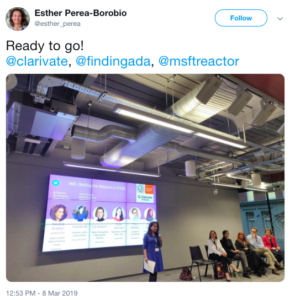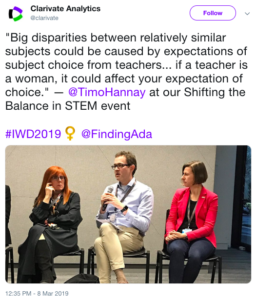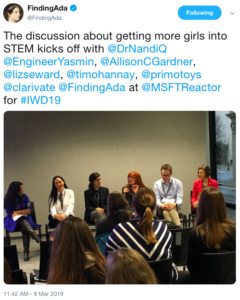 Recruiting more women is key to addressing the shortage of qualified STEM professionals, and a strong commitment to recognising what women want from a job, and fulfilling those needs, will help you increase the number of women in your workplace. You will also be better placed to create a welcoming and inclusive environment that will improve staff retention, thus cutting down on recruitment costs and minimising the loss of expertise and knowledge when staff leave.
Recruiting more women is key to addressing the shortage of qualified STEM professionals, and a strong commitment to recognising what women want from a job, and fulfilling those needs, will help you increase the number of women in your workplace. You will also be better placed to create a welcoming and inclusive environment that will improve staff retention, thus cutting down on recruitment costs and minimising the loss of expertise and knowledge when staff leave.
Understanding women’s motivations — why a woman might choose your job over another — will help you to craft meaningful job descriptions, compelling job ads, and inspiring HR communications materials. For example, only one in eight graduates is motivated primarily by salary. Rather, candidates are concerned with opportunities for promotion, flexibility and a good work-life balance, long-term security, access to further training, and the social worth of the work. Furthermore, women are more likely than men to value training, security, flexibility and jobs with social value.
Simple things you can do to attract more women include:
- Be clear about, and publicise, your organisation’s values
- Support the forming of positive relationships among colleagues
- Ensure internal communication is effective, fair and respectful
- Provide a clean, comfortable and healthy workplace
Be clear about organisational values
Many aspects of working life matter equally to all employees, however, women often prefer to work in an organisation where the corporate values resonate with their personal values, so include your organisation’s mission, ethics and CSR statements in your application pack. Being clear about your values doesn’t just improve your relationship with your staff, it also helps you develop trust with investors, sponsors, neighbours, and customers, as well as in informing business strategy.
The articulation of values sometimes forms part of a Corporate Social Responsibility (CSR) agenda, which may be the responsibility of the human resources, marketing, or public relations teams. CSR has clear links to a company’s reputation, and so to its success. However, it is essential that values are developed not merely as a marketing exercise, but as a sincere expression of the practices and aims of the company. They should be embedded throughout organisational processes, including the performance review process and in job competencies. Involving women and other minority groups in drafting inclusive CSR policies and goals is a good way to develop your organisation’s relationships with those groups, and so to attract and retain them as employees.
Provide a space and time for relationships to form
When employees feel clear about, and at home with, an organisation’s values and culture, they are more likely to feel positive about each other too. For women employees, developing good relationships at work can add significantly to their sense of belonging. During your recruitment process, provide applicants with informal contacts among current staff from whom they can gain ‘insider knowledge’.
Organisations sometimes assume that women can only be friendly with women, so if the majority of employees are men, women are marginalised and see fewer opportunities to develop positive professional relationships. Men should be encouraged to view getting to know women colleagues as a routine professional responsibility.
Building relationships takes time: are there enough moments in the working day for staff to interact, and enough places and events for them to do so? Many businesses schedule social events after work, which can be problematic for women who are more likely to have domestic responsibilities that men do not. Careful thought should also be given to the role of alcohol, as relying on ‘going to the pub’ can be alienating for anyone who doesn’t drink, and for women who may feel less comfortable in a pub environment. Instead, provide opportunities for people to gather and chat over lunch, or set aside time each month for an informal gathering during office hours.
Create a communications culture that involves and supports women
Strong professional relationships can substantially aid in another area that many women consider important: communication. Where social networks include women, women are more likely to pick up on local knowledge and breaking news, and feel involved in the life of the workplace.
Where the upper management is predominantly male, women have less access to corporate planning and decision-making. If they are cut out of these processes, women will seek new roles where they can have influence, so examine your formal and informal communication practices and check for direct and indirect discrimination. For example, word-of-mouth will reach people on site, while group emails will also reach those working from home (who are more likely to be women). Use more than one tool to send your from home (who are more likely to be women). Use more than one tool to send your messages, so that you increase the chance everyone will be successfully reached. Understand how your staff receive and send information, and use those same tools.
Communication is about talking as well as listening. Studies have shown that men talk more than women, and that women are interrupted more. It’s thus unsurprising that women feel less confident that they can make suggestions in the workplace and be listened to, and not penalised. Women who do express an opinion are sometimes described as feisty, aggressive or stroppy, whereas for men, speaking out is seen as proof of their leadership potential.
Create a communications culture that encourages women to speak, where their words carry weight and and are respected, and where interruptions are the exception not the rule. Encourage women when they show the same leadership traits as their male colleagues.
Your workplace can be a tool for retention
It is well established that, over their career, women are likely to earn 20 per cent less than their male colleagues. While women may recognise the unfairness of the general situation, they are much less likely than men to walk away from a job opportunity for financial reasons. Other, non-financial, benefits are very important, for example, having a clean and comfortable working environment matters. Ergonomically appropriate chairs and desks, clean carpets, and effective lighting all contribute to a positive environment. Call for volunteers for a well-being ‘user group’, and respond to their feedback.
Keeping staff fed and watered can also enhance well-being, performance and collegiality. Old kettles and dirty mugs are unpleasant for everyone, but women in particular are deterred from using poor facilities. Worse, they may find themselves clearing up after their colleagues, as they are often expected to carry out ‘domestic’ tasks, even in the workplace. Keeping kitchen facilities clean and tidy should be everyone’s responsibility.
Women are more likely than men to bring food from home, and so people with a packed lunch should be able to eat it in the dining area alongside their colleagues. Friendships, creative encounters, information exchange and unlikely collaborations all happen over food, so making the dining area a place everyone wants to use can have many positive effects for your organisation.
Candidates also care about details like the quality of food in the staff canteen, so show off your facilities in your applicant pack, and ensure that interviewees can see a pleasant working environment when they attend their interview.




